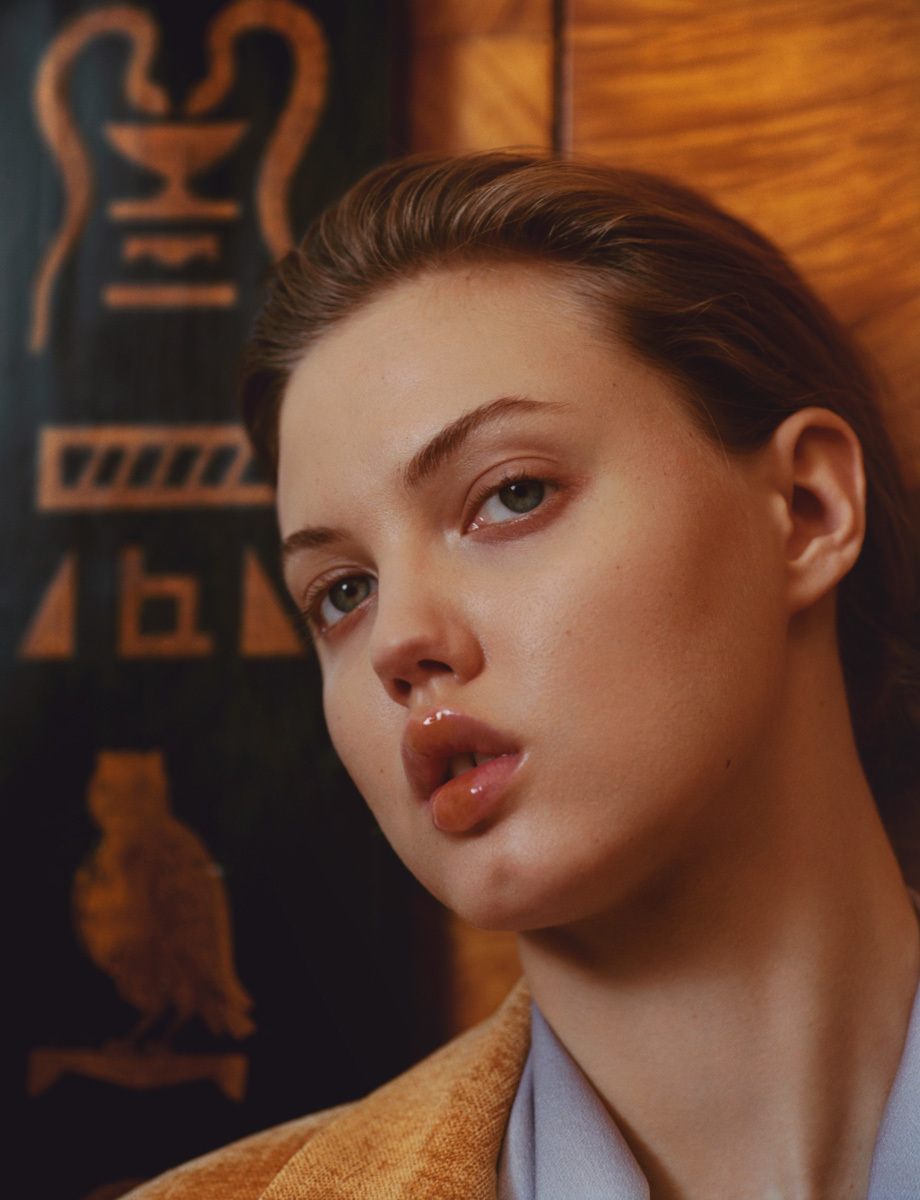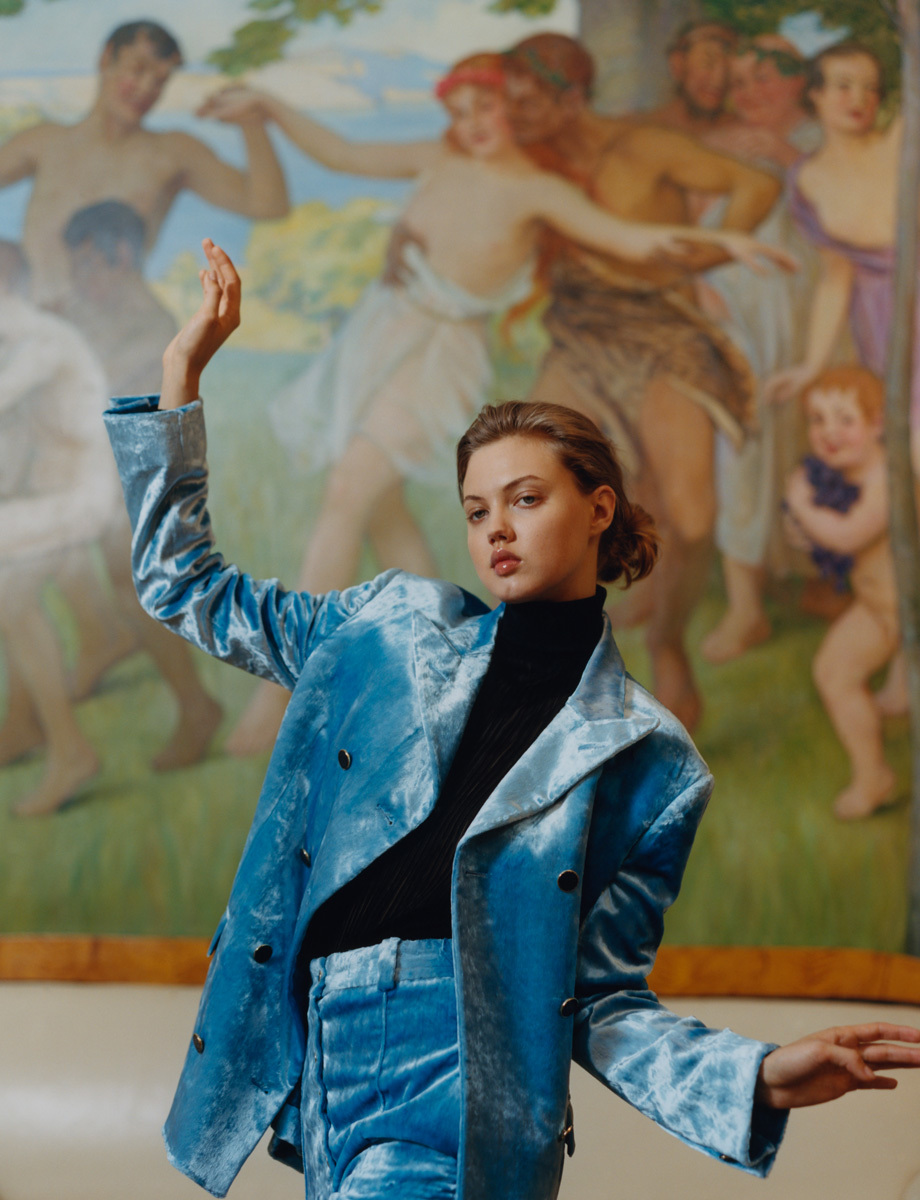
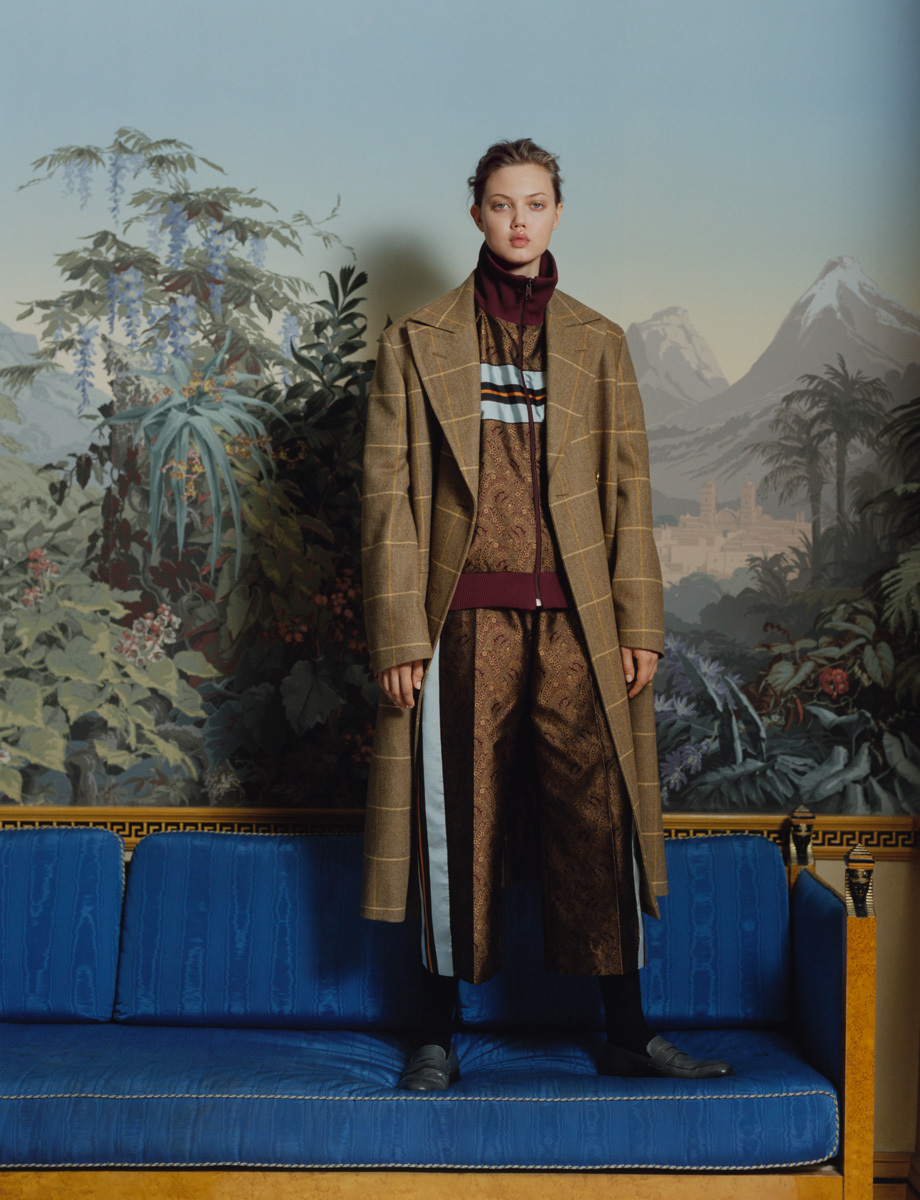
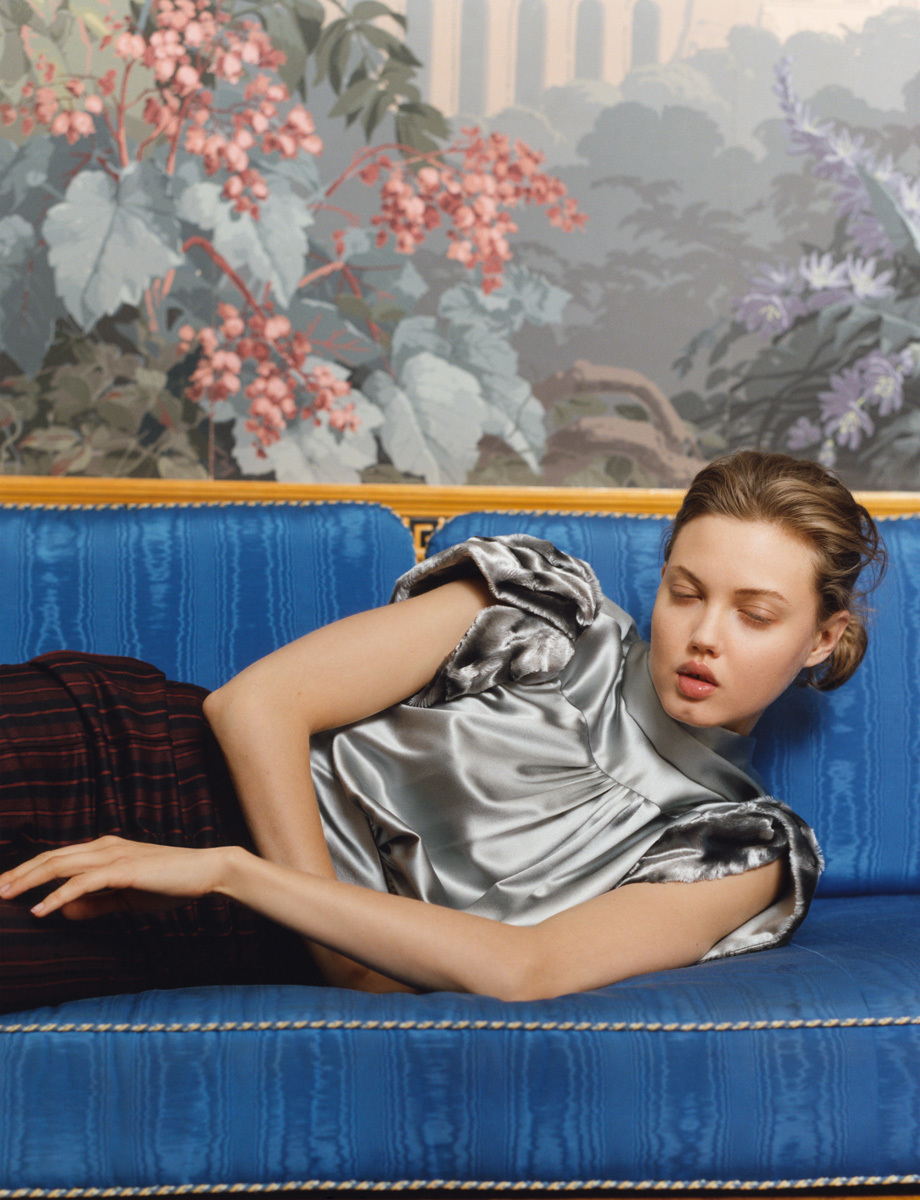
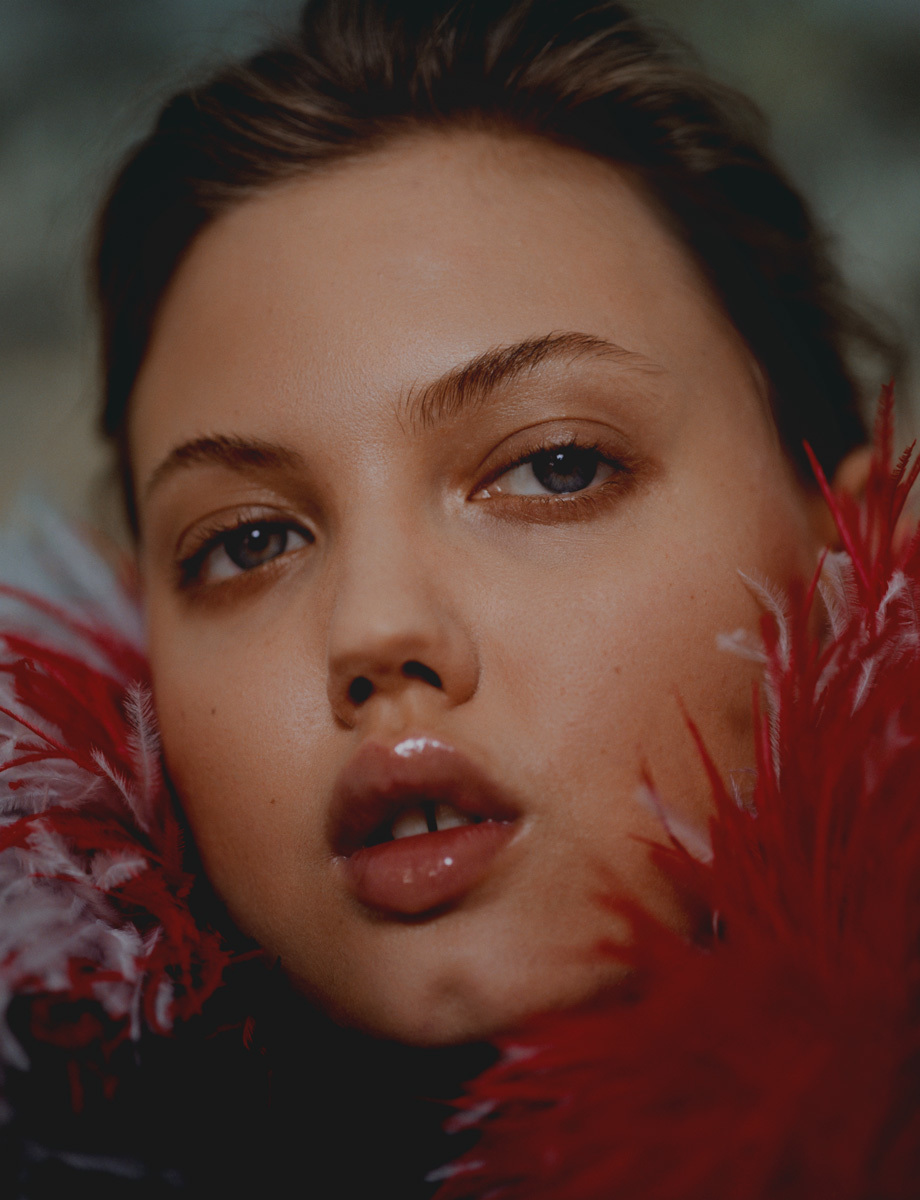

When Katie Hillier and Luella Bartley launched Hillier Bartley last spring, no one yet understood precisely how their then-newborn brand was echoing the zeitgeist. Vanity Fair had just unveiled Caitlyn Jenner, fashion houses were putting middle-aged women in their campaigns, and Hillary Clinton was slowly gearing up for her presidential campaign. Those factors and many more sparked a year consumed by gender-nonconformity. Hillier Bartley, as they called their label, didn’t know it either, but behind the brand’s pauper-meets-prince façade of tattered opulence, the ideas that created it were hitting the cultural nail on the head — alongside two other fashion phenomena born out of that same spirit: Alessandro Michele’s richly androgynous Gucci, and the internet-savvy Vetements where clothes were multi-everything: multi-gendered, multi-sexual, multi-personal. (Still are.) Katie and Luella took male fashion icons such as Lucian Freud, Edward VIII, and David Bowie, and used them as muses for their handsome womenswear, creating a genderless and ageless expression that managed to be really, really sexual.
“It feels like it’s a moment where women feel like they can do what they want, when they want,” Katie says when we meet a year on, in the sunny garden of Rochelle School of Art, which houses their Shoreditch studio. “If they want to wear a dress that comes up to their crotch, they’re not going to be judged and told they look like a slag anymore. It’s empowering because they’ve got a body and they want to show it off. If girls want to look like boys it’s equally as empowering because they’ve got flat shoes and a suit on at an event where normally they would have had to wear a cocktail dress. All the rules have changed.” It’s a mood generated by necessity: in 2015 alone, Angela Merkel made far more controversial decisions than color-blocking a softly mannish two-piece suit, Theresa May’s political views couldn’t be further from those of the woman behind her favorite Vivienne Westwood trouser suits, and this year Hillary Clinton needs graver advice from the public if we want her to beat Donald Trump in November than on how to match her tailored separates. “We’ve looked quite a lot at glam rock men, especially for winter, and they’re often described as ‘wolves in women’s clothing’,” Luella explains. “I think women have that confidence now, and it’s re-appropriating that sort of swagger.”
She’s referring to the decadent jacquards and embroidery that make up Hillier Bartley’s princely oeuvre — what they themselves repeatedly describe as “rakish and louche,” like an oversized camel coat with a heavy gold tassel as belt or a silky, stripy three-piece suit with flounces at the ankle. “There’s a slight disconnect because what is feminist dressing like now? Ours is not really about that, because what it is doing is re-appropriating menswear,” Luella continues. “I don’t know if feminist dressing is being very brazen and confident about your body. I get very confused about it, to be absolutely honest, because we do something that’s quite demure. What is an empowering mode of dressing? Is it Beyonce in a leotard, is it Hillier Bartley in a tux, or is it all of those things? It can encompass anything, because women should dress how they feel. But it is quite confusing, because everyone is a feminist these days.” It’s a fact to which both she and Katie have helped contribute throughout their careers, even if Luella’s highly feminine work for her former eponymous label represented a different kind of girl power.
Katie and Luella’s late-90s entry onto the fashion scene — Katie as accessories designer for major brands — was the beginning of an era of British women designers, who now count for some of the biggest names in the industry, from Stella McCartney to Victoria Beckham and newcomer Grace Wales Bonner, whose culturally loaded menswear won the LVMH Prize this year, co-awarded to her by Phoebe Philo, another member of the club. Long before Maria Grazia Chiuri was revealed as the new creative director at Dior, rumor had it the brand was indeed looking for the first-ever woman designer to take the helm of the house so historically female-centric. It’s only right, and it’s thanks to women like Katie and Luella — both in their very early forties — that this once so male-dominated fashion industry has changed. Their tenure designing for Marc by Marc Jacobs from 2014-15 won them more praise than the man himself, even if their residency was short-lived due to corporate restructuring that saw the diffusion line folded into Jacobs’ mainline. And as most of fashion knows, the birth of the it-bag in the 00s was largely due to the respective geniuses of Katie and Luella, who designed them for brands like Mulberry (Bartley) and of course Marc Jacobs (Hillier).
It’s often said that women designers approach the cut of garments differently, because they have an innate understanding of the female form, something that’s certainly true for Hillier Bartley. “Body shape seems to be changing and being embraced more,” Katie says. “I don’t know whether or not the Kardashians are a brilliant example, but they’re not skinny girls and they’ve got this insane following of young girls, who think they’re amazing. The positive part about it is that they seem like they… natural is probably not the right word to use,” she pauses, Luella cracking up, “but they are embracing a fuller figure.” “It’s still unattainable. It’s fake,” Luella argues. “Age, body image, gender: on one hand it feels like a much more accepting society and on the other hand it feels quite scary and fake. There are two quite strong things going on. I don’t know about this whole Kardashian effect. I find it quite astonishing because I don’t see a happiness or naturalness in there. I do find the fact that my daughter is obsessed with it really unnerving,” Luella admits, referring to her ten-year-old daughter with David Sims, with whom she also has two sons. “I don’t know if she knows who Kim Kardashian is but it’s that type of femininity: something that’s very self-conscious.”
Although always immaculately dressed, Katie and Luella are not the type of women to get blow-dries and spend hours on contouring, favoring instead an understated beauty that echoes the nonchalant glamour of the woman for whom they design. “You can’t blame it on Kim Kardashian,” Luella concludes. “It’s the internet and how people use it. Anything that feels fake and self-conscious, that’s what I have a problem with. It makes me feel a bit depressed and sad.” Does she worry about her daughter growing up in an age of social media? “All the time. I mean, I worry about all my kids but I embrace them. They’re amazing spirits. And I trust her. She’s a kind, intelligent, sweet, fun-loving girl, and I don’t want it to sound negative but she’s growing up in a very narcissistic time and it’s tempting. You get swept up by it and it’s very vacuous. You have to lead by example a little bit, and I don’t want to become any kind of role model, but for my daughter I am one, and if she sees me reading, she reads with me. I think the problem is that we’re all on our phones all the time.” So of course they’re on their phones. Katie and Luella may be prolific Instagrammers on their personal accounts, but their business strategy couldn’t take a bigger stand against over-exposure. With no show, private appointments only, and collection pictures not released until it hits stores, Hillier Bartley aren’t just impacting how women dress, but how an entire fashion world is approaching the future.
Credits
Text Anders Christian Madsen
Photography Letty Schmiterlow
Styling Julia Sarr-Jamois
Hair Alex Brownsell at Streeters using Kérastase Nutritive. Make-up Nami Yoshida at Bryant Artists using Givenchy Le Makeup. Photography assistance Andrew Moores, Alessandro Tranchini. Styling assistance Rosie Williams. Make-up assistance Tamayo. Casting director Angus Munro at AM Casting (Streeters NY). Model Lindsey Wixson at The Society.
